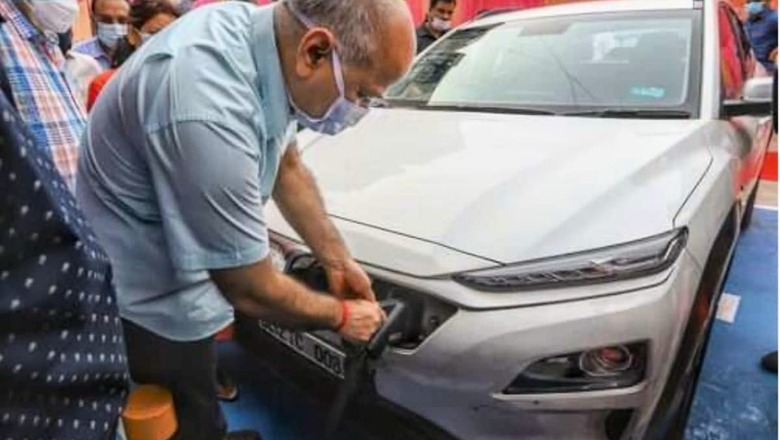
views
The Electric Vehicle (EV) market in India is moving ahead, and various incentives have been introduced, both at national and sub-national levels, such as National Electric Mobility Mission Plan (NEMMP) and Faster Adoption and Manufacturing of (Hybrid) and Electric Vehicles (FAME), as well as the New Vehicle Scrappage Policy, offering both fiscal and non-fiscal incentives to drive the transition towards EV ambition of India.
However, a sustainable market for EVs would still require more concerted efforts towards development of an eco-system with the right infrastructure (better battery systems, adequate charging infrastructure etc.), financing/ mortgage mechanism, innovative business models, etc.
Charging Infrastructure remains a key constraint to EV adoption
As part of the EV ecosystem creation, the availability of charging infrastructure remains a key constraint in wider acceptance of EVs among users. There is a slow growth in charging infrastructure, owing to the high cost involved and lack of payouts due to limited utilization of the existing infrastructure. Further, in the context of public bus transport fleets, operators may be averse to investing in charging infrastructure, owing to risks and return on such investment.
The perplexity for the charging standards further adds to the challenges. Moreover, there is limited awareness among users/ other players about the government’s charging policies, such as the need to obtain a license to set up a charging station.
Initiatives and Campaigns from various government agencies are a silver lining
Realizing the increasing importance of promoting EVs, some government agencies have started setting up charging infrastructure at some locations, either through partnering with private sector or by directly awarding turnkey contracts. Such initiatives from the public sector have been able to create the much-required initial traction.
Several other initiatives and campaigns have also been launched – ‘Go Electric’, a national-level campaign has been launched to raise awareness on the benefits of e-mobility and charging infrastructure. The Common Service Centre (CSC) has further initiated Rural e-Mobility Programme to boost the sale of EVs in rural India. Along these lines, the ‘Switch Delhi’ Campaign is a welcome step towards eliminating the roadblocks in commercialization of EVs.
As part of ‘Switch Delhi’, a clear vision has been established to install charging infrastructure in Delhi at every 3 kilometers , and bids have been invited to build a network of 100 public charging stations with 500 charging points across the state by December 2021 . The use of technology and mobile apps has been envisaged to facilitate information about the geo-locations of charging stations and their details being available on real time basis.
To drive this campaign, it shall be necessary to ensure standardization across various aspects of EV technology.
Building strong partnerships is the key to success.
The commercial success for EVs is based on successfully installing charging infrastructure that is accessible, user friendly, and affordable. While there are still uncertainties, with a range of charging technologies currently available and more expected to emerge in the future, innovative business models with optimal private sector participation will certainly provide a fillip to investment in the development of charging infrastructure for the EVs.
Way forward: Making charging infrastructure a viable option
The charging infrastructure in India can be made a viable option by offering it as a bundle of services. There are several factors to be considered, while ensuring the delivery of charging services. For instance, it should cater to the right vehicle and business segments and ensure that interoperability is not a hindrance.
Future potential of the charging infrastructure could also be explored as under, towards making EVs scalable and a sustainable solution:
• V2G Charging: In addition to charging an EV in the traditional sense, this technology allows for energy stored in an EV’s battery to power a house/external load (V2H: Vehicle to Home) or send it back to the grid (V2G: Vehicle to Grid).
• Wireless Charging: By parking the vehicle on a spot with a charger on the ground, the vehicle’s battery can be charged wirelessly.
• Mobile Charging Units: These can be called to charge the vehicle at any location in case the battery gets fully exhausted, thereby alleviating range anxiety.
• Charging-as-a-Service: This opportunity provides a way to charge the EV through the assistance of a service provider. They can pick up the discharged vehicle, charge it and bring back to the user for a nominal charge, thereby bypassing the need for a charging station nearby.
For India to harness its true potential for electric mobility, it is critical that there is a transition from awareness to action by all the stakeholders and the technology updates are leveraged based on what are best suited for India.
Read all the Latest News, Breaking News and Coronavirus News here. Follow us on Facebook, Twitter and Telegram.




















Comments
0 comment